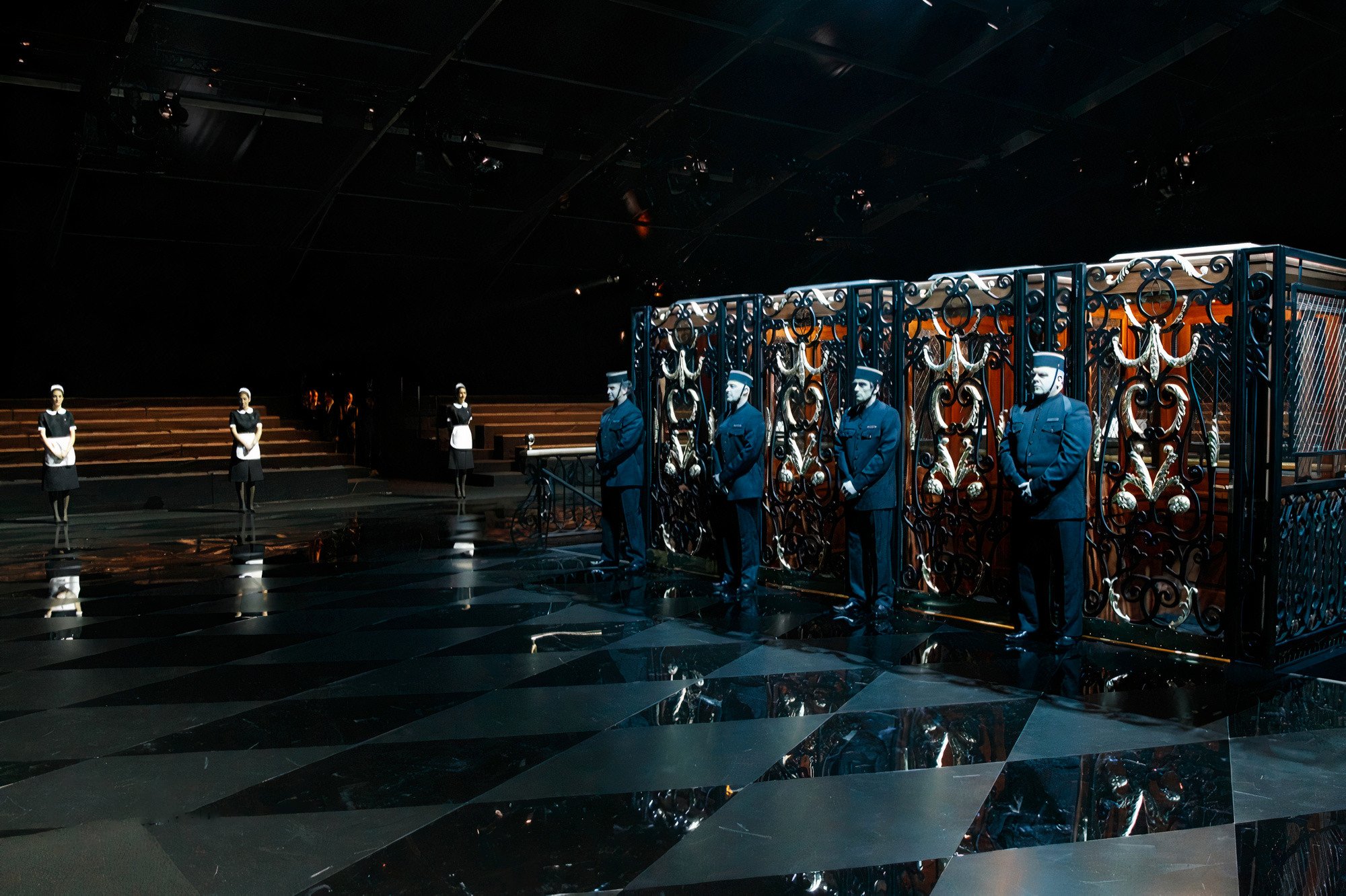Elevators Take the Stage at Louis Vuitton Fashion Week in Paris
Louis Vuitton - Paris Fashion Week Fall 2011 / Winter 2012 Runway Show in Louvre
In the world of high fashion, Louis Vuitton is known for its extravagant and unforgettable runway shows. One of the most iconic shows in recent memory was the Fall/Winter 2011 presentation, where the runway was set in front of a row of four working vintage elevators.
Installed inside the Louvre, the 19th century wrought iron birdcage elevators are showcased as a true unique and elegant pieces of machinery.
Gilded elevator doors flanked by bell boys open to reveal a supermodel-studded cast for this epic runway show. Models emerge from a custom made bird-cage elevator showcasing the collection in a visually stunning and unexpected way.
The entry gates are made of wrought iron, coloured black with gilded gold highlights, and feature intricate patterns and designs. The elevators cabs themselves, which are often overlooked, became transformed into a piece of interactive art. Looking inside, the elevator cabs were finished in a wood rail and stile assembly with applied wood mouldings. The concave dome ceiling finished with a patina bronze completes the effect, harper back to a bygone era.
“The vintage elevators, antique train, and the steam engine, all used in the runway shows, evoke the nostalgia of this bygone era”
The show offered viewers an exclusive, immersive, interactive, and entertaining experience, giving audiences a backstage pass to the world of luxury world of 19th century grand hotels. This unique theme for the runway show was a tribute to the brand's origins in luxury luggage.
A nod to the grand era of travel and tourism, where transportation, trains, planes, and luxury hotels were the symbol of status and modernity. Louis Vuitton's luggage, which is synonymous with luxury and quality, was an essential accessory for global travellers during this era. The vintage elevators, antique train, and the steam engine, all used in the runway shows, evoke the nostalgia of this bygone era when travel was a luxurious and sophisticated affair.
Marc Jacobs, the creative director at Louis Vuitton, was behind the concept of the show. He wanted to pay homage to the brand's history by setting the runway on an unlikely location, elevators. This was not the first time that Jacobs had used unexpected locations for Louis Vuitton's runway shows. In the past, he had set shows on an airplane, an antique train and even on a hand crafted steam engine installed in the courtyard of the Louvre.
Years later, after a sixteen-year tenure at LV, Marc Jacobs left the fashion house, leaving behind a legacy of unforgettable runway shows. In his final retrospective show, past collections were featured, including set pieces from previous shows such as the carousel from the SS 2012 show, escalators from SS 2013, fountains from FW 2010 and the elevators from FW 2011.
This unique and imaginative use of elevators as a runway location showcases the brand's ability to think outside of the box and create an unforgettable experience for its audiences. It also highlights the importance of architecture and design in the fashion industry. The elevators themselves become a part of the show, adding to the overall aesthetic and storytelling of the collection.
Louis Vuitton's use of vintage elevators as a runway location in its 2011 Fall/Winter show was a masterstroke of creativity and a nod to the brand's heritage. The show, along with other unique runway locations, was masterminded by Marc Jacobs during his tenure at the fashion house and left a lasting impression on the fashion industry.










Le Dokhan's, Paris Arc de Triomphe is a luxury hotel located close to the iconic Arc de Triomphe. Guest rooms, restaurant, bar, fitness center and exceptional service are offered but what makes this hotel truly unique is its elevator cab, made from a vintage Louis Vuitton steamer trunk, adding luxury and nostalgia to guest experience. Perfect choice for luxury travelers visiting Paris.